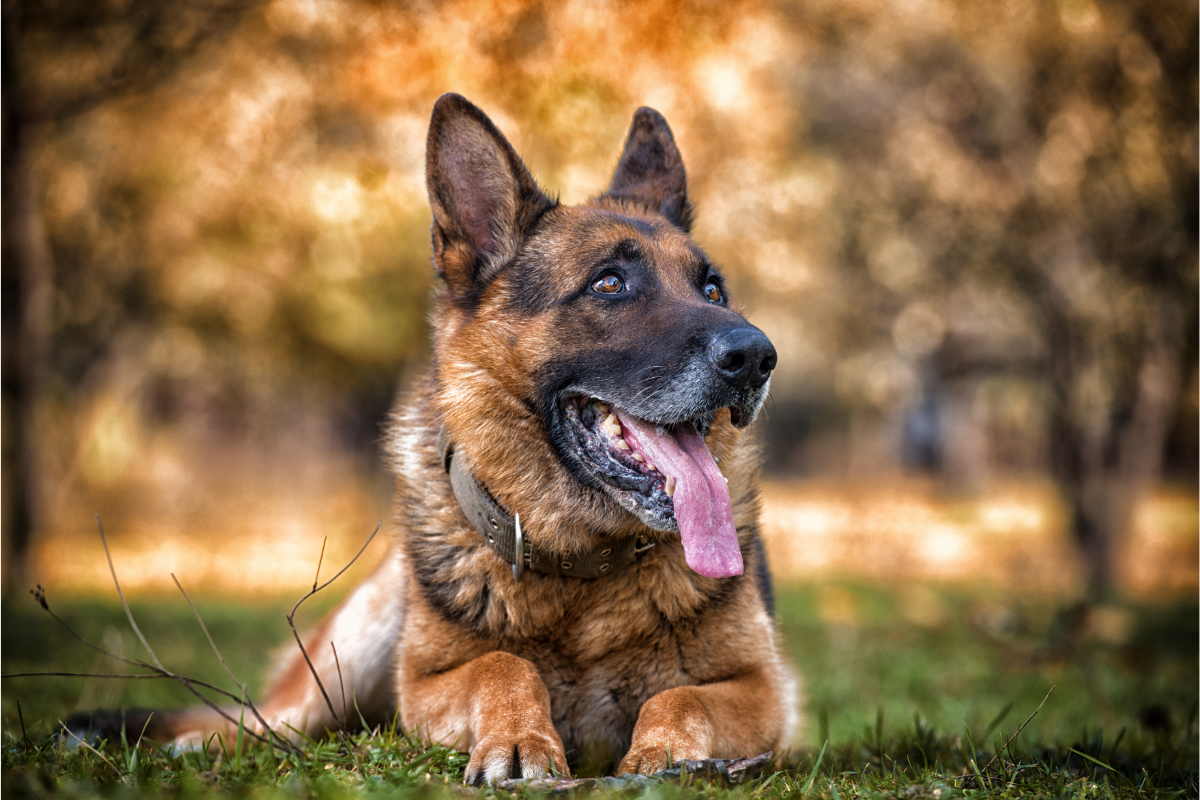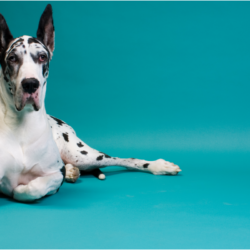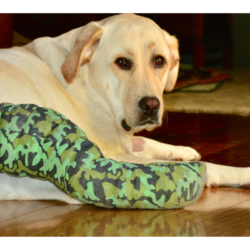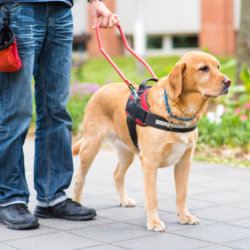Dysplasia in dogs is a common condition affecting many breeds, particularly large breeds. This joint disease can affect the hip, elbow and other joints, leading to chronic pain and reduced mobility. Although it is largely a genetic condition, various environmental factors can also influence its development.
What causes this condition?
Dysplasia is an abnormality in the development of tissues, mainly joints, resulting in incorrect alignment of the bones and poor joint congruence. In dogs, this condition is most commonly seen in the hips (coxofemoral dysplasia) and elbows, although it can affect other joints. Dysplasia results from a combination of genetic, environmental and nutritional factors, leading to premature degradation of articular cartilage.
Genetic factors play a key role, particularly in hip dysplasia. Certain breeds, such as the German Shepherd, Labrador Retriever and Rottweiler, are particularly predisposed to this condition due to their genetic lineage. Responsible breeders seek to reduce the prevalence of hip dysplasia by selecting dogs free of the condition for breeding.
However, environmental factors can also contribute to the development of dysplasia. Rapid growth during youth can unbalance bone and muscle development, increasing the risk of dysplasia. Excess weight is another aggravating factor, as it puts extra pressure on the joints, accelerating the wear and tear on cartilage and worsening symptoms. In addition, inadequate or unbalanced nutrition during the growth phase can disrupt joint development, increasing the risk of dysplasia.
Inappropriate exercise is also a factor to consider. Excessive exercise, especially on hard surfaces, can put excessive pressure on developing joints, contributing to the progression of dysplasia. Finally, certain hormonal imbalances or abnormalities in body structure can also play a role in the development of this disease.
What are the symptoms of dysplasia in dogs?
Dysplasia manifests itself in different ways, depending on the joint affected and the severity of the condition. In dogs, symptoms can vary, but the most common signs include intermittent or persistent lameness, often after exercise or strenuous activity. This lameness may affect one or more legs, and may become more pronounced over time.
Dogs with dysplasia often show joint stiffness, which is particularly noticeable after a prolonged period of rest. This stiffness can make it difficult to stand up, climb stairs or jump into a car. Reduced physical activity is also common in dogs with dysplasia, as pain and discomfort cause them to avoid certain activities that require great mobility.
Another consequence of dysplasia is muscle atrophy. When a dog avoids using a painful joint, the surrounding muscles can weaken, making the symptoms worse. In the long term, dysplasia can lead to secondary osteoarthritis, a condition where chronic joint inflammation sets in, causing even more pain and stiffness.
Changes in a dog’s gait are also an indicator of dysplasia. Some dogs may adopt abnormal posture to minimise pain, which can be seen when walking or standing. Finally, a reaction to manipulation of the affected joints, such as visible pain on palpation, is a sign not to be overlooked.
These symptoms do not always specifically indicate dysplasia and can easily be confused with other joint conditions. Early detection and accurate diagnosis are therefore crucial to ensure appropriate management.
How is the diagnosis made?
Diagnosing dysplasia in dogs is a crucial step in establishing an effective treatment plan. The process generally begins with a detailed clinical examination. The vet will take a medical history of the dog and observe any symptoms reported by the owner, such as lameness, stiffness or reluctance to exercise.
A thorough physical examination is then carried out to assess the dog’s mobility, look for signs of pain on palpation of the joints and observe the gait. However, to confirm the diagnosis, X-rays are essential. These images help to identify abnormalities in the structure of the joints, such as bone deformities or signs of degeneration. Vets generally carry out X-rays under anaesthetic to ensure the dog is in the best possible position and to obtain high-quality images.
In some cases, they use advanced imaging tests, such as CT scans or MRIs, to capture more detailed images, particularly when X-rays are inconclusive or other conditions are suspected. These techniques allow us to visualise the soft tissue around the joints and detect subtle abnormalities.
For certain predisposed breeds, a genetic evaluation can be carried out to identify markers associated with dysplasia. These tests are particularly useful for breeders wishing to reduce the prevalence of the disease in their lines.
What treatments are available?
Once dysplasia has been diagnosed, several treatment options are available to improve the dog’s quality of life. These treatments can be surgical, medicinal or conservative, depending on the dog’s age, the severity of the dysplasia and the dog’s response to initial treatments.
Surgery is often recommended in severe cases or when dysplasia is diagnosed early in puppies. One of the most common procedures is symphysiodesis, performed in puppies between 12 and 20 weeks of age. This procedure involves fusing the pubic symphysis to stabilise the hip joint. For older dogs, procedures such as triple osteotomy of the pelvis (TOB) or total hip replacement may be considered. TOB involves reorienting the hip joint to distribute pressure more evenly, while hip replacement replaces the defective joint with an artificial prosthesis.
For dogs with less advanced dysplasia, or as a complement to surgery, vets prescribe medication to manage pain and inflammation. Non-steroidal anti-inflammatory drugs (NSAIDs) commonly reduce inflammation, while analgesics relieve pain. Monoclonal antibodies, a more recent option, can target specific inflammatory proteins and offer longer-lasting relief without significant side effects.
What are the natural alternatives?
In addition to traditional treatments, there are many natural alternatives that can help manage dysplasia in dogs. A balanced diet is the first step. Opt for foods rich in high-quality proteins, omega-3s and antioxidants to support the joints and reduce inflammation. Weight control is crucial to minimise pressure on joints, especially in dogs predisposed to dysplasia.
Dietary supplements also play an important role. Glucosamine and chondroitin are popular supplements for strengthening cartilage and improving mobility. Omega-3 fatty acids and vitamin E can reduce inflammation and support joint health. Herbs such as turmeric and harpagophytum are known for their anti-inflammatory properties and can be added to a dog’s diet to help relieve joint pain.
Gemmotherapy, using extracts from buds such as horsetail or bramble, is another natural alternative that can promote joint health and relieve inflammation. These natural approaches, combined with appropriate weight management and exercise, can greatly improve the quality of life of dogs with dysplasia.
Finally, moderate exercise, such as swimming or controlled walking, can help strengthen the surrounding muscles and improve mobility without stressing the joints. Alternative therapies such as acupuncture,hydrotherapy and osteopathy can also offer significant relief, improving the dog’s general well-being and reducing pain.
What can be done to prevent it?
Preventing dysplasia in dogs is a challenge, mainly because of the genetic component of the disease. However, there are a number of measures that owners and breeders can take to reduce the risks.
One of the most effective methods is careful selection of breeding stock. Choosing dogs that have been tested for dysplasia and have favourable results can reduce the transmission of the condition to offspring. Tests such as x-rays for hip and elbow dysplasia are essential in this process.
Using genetic testing to identify markers associated with dysplasia is also a useful preventative measure. This allows breeders to make informed choices when breeding, thereby reducing the prevalence of the disease.
A diet rich in antioxidants, omega-3s and glucosamine can help maintain joint health and prevent the development of dysplasia. Weight control is also crucial, as excess weight increases pressure on the joints, exacerbating symptoms in predisposed dogs.
It’s important to avoid high-impact exercise, especially in puppies and young growing dogs. Favour moderate activities that strengthen the muscles without putting excessive stress on the joints. Providing a suitable environment, with comfortable resting surfaces and easy access to outdoor areas, can also reduce the risk of joint injuries.
Finally, for dogs at risk, vets carry out screening x-rays from the age of 12 to 18 months, to detect any abnormalities and intervene early if necessary. Specialists also consider preventive surgery, such as symphysiodesis, to reduce the risk of dysplasia in predisposed puppies.





